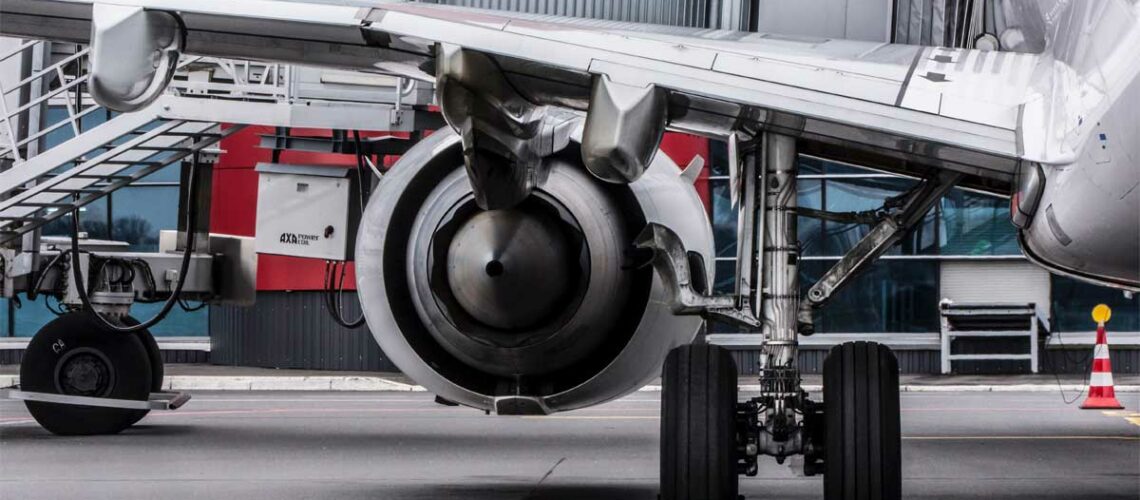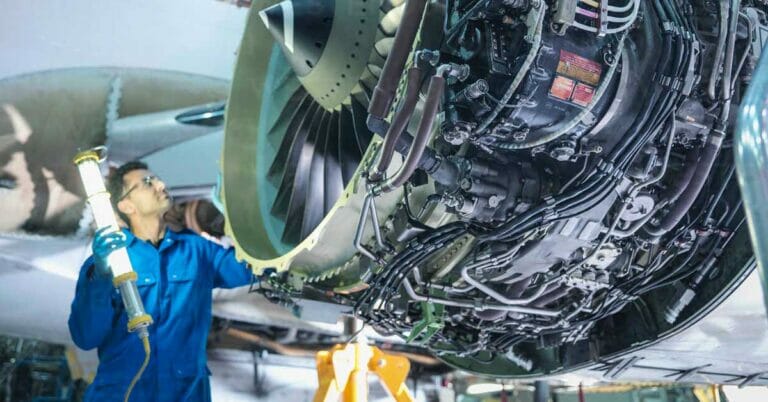Aeronautical maintenance includes several steps that are essential to ensure the safety of the flight
It starts before each flight and as close as possible to departure an external inspection must be carried out in order to re-check the general condition of the aircraft: possible damage to the fuselage, landing gear and wings, which may have occurred during the flight or during the stopover. It is also checked that the registers and connectors of all services that have been connected to the aircraft during the stopover, such as fuel, waste water, electricity, etc., are in good condition.
Every 100 hours of flight, all aspects of safety are checked, any anomalies are corrected and the aircraft undergoes a complete overhaul.
These activities are subject to and performed when:
- A specific flight time (measured in hours) has been flown.
- We have subjected the aircraft to a specific use. For example: number of take-offs/landings.
- A failure, malfunction or anomaly has been detected
- In order to ensure that all these checks are carried out correctly, the various maintenance tasks include
- Periodic inspections.
- Pre-flight checks.
- Performance monitoring
- Record equipment settings and tasks.
- Carry out modifications and repairs.
There are a number of aspects that must be considered when carrying out an aircraft maintenance activity
including:
- The aircraft manufacturer.
- The operator.
- The regulatory authority of the country or region.
- Other entities or organisations related to the equipment or the operator.
Each aircraft, depending on its category and use, is subject to different regulations. Each situation is unique, and often some equipment becomes obsolete rather than being sent for maintenance. For example, older aircraft are often removed from the fleet due to the high cost of overhaul.
It is important to be aware of local regulations so that maintenance carried out is in accordance with the law.
However, there are two categories of maintenance:
Preventive and corrective maintenance
Preventive maintenance is maintenance carried out on a regular basis to reduce the probability of an aircraft failure. It is limited to work that does not involve complex assembly operations, and may be carried out by the pilot in some cases.
Each manufacturer provides a manual for this type of task.
All pilots performing preventive maintenance should add an entry to the logbook. The entry should include the following information:
A description of the work, such as “oil change (Shell Aero-50) at 2345 hours”.
The date of completion of the work performed.
Name, signature, certificate number and type of certificate of the pilot.
Now, let’s move on to corrective maintenance
When we talk about corrective maintenance we are talking mainly about repairs but also replacements, or alterations carried out when the aircraft components have already failed, collapsed or have to be dismantled.
Its objective is to restore the equipment to its normal operating condition, ensuring its airworthiness.
Although each country or region has specific protocols, when major repairs or modifications are carried out, they must be approved by the competent authority.
Minor repairs may be approved for return to service with an entry in the maintenance records signed by a mechanic. Pre-flight inspections must be passed and these operations must be carried out by technicians certified by a qualified repair organisation.
In order to ensure that all of these tasks are carried out correctly, whether it be preventive or corrective maintenance, it is important to have a very good CMMS software such as Matrix Aviation, which will ensure that the fleet is operating correctly.



